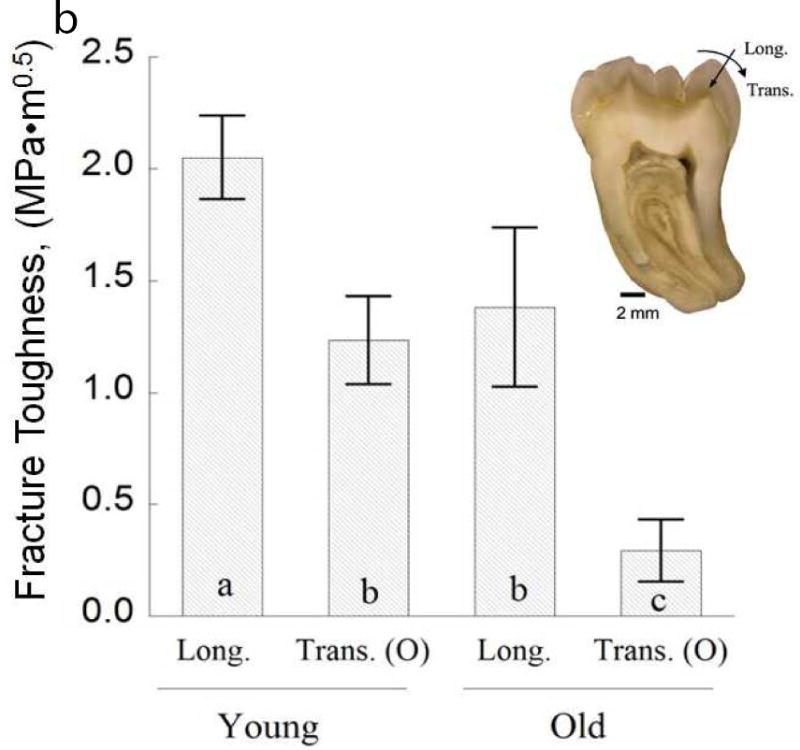Fig. 5.


Characteristics of the crack growth resistance of enamel. (A) The increase in resistance to fracture of enamel with crack extension. This data was obtained from crack growth in the longitudinal direction of cuspal enamel, i.e. from the occlusal surface towards the DEJ. The “fracture toughness” of the specimen (Kc), was identified from the last point of stable crack extension preceding bulk fracture. (B) The fracture toughness of the enamel from 3rd molars for cracks extending from the occlusal surface to the DEJ (longitudinal) vs growth with buccal-lingual orientation (transverse). The columns represent the average values with standard deviations. Columns with different letters are significantly different.
A: Data from Bajaj D, Arola D. Role of prism decussation on fatigue crack growth and fracture of human enamel. Acta Biomater 2009;5(8):3045–56.
B: Adapted from Yahyazadehfar M, Zhang D, Arola D. On the importance of aging to the crack growth resistance of human enamel. Acta Biomater 2016;32:269; and Bajaj D, Arola D. Role of prism decussation on fatigue crack growth and fracture of human enamel. Acta Biomater 2009;5(8):3046; with permission.
